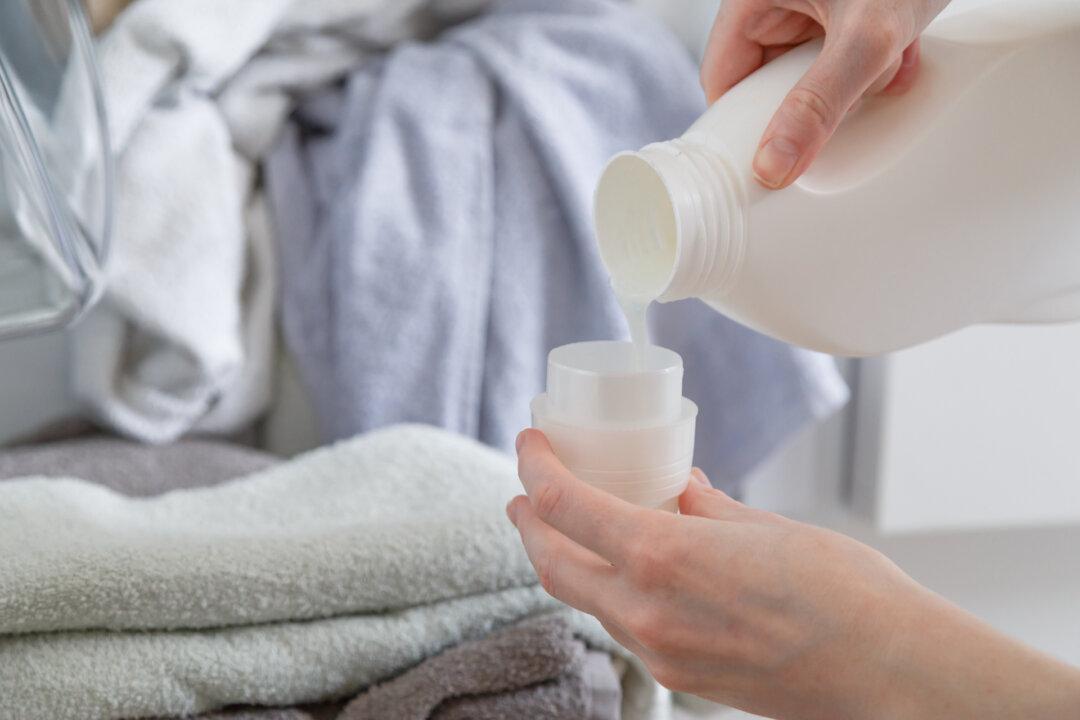Most of us use way too much laundry detergent, which can present all kinds of problems such as skin irritation, grayish-looking whites, and stiff, scratchy clothes and linens. Whatever amount of detergent you use, it must be completely rinsed away for the results to be beautifully clean, whiter-than-white, brighter-than-bright soft clothes and linens.
Generally—and I use that word because there are so many variables, which I'll touch on shortly—for a standard-size washer in areas with soft water, use 1 tablespoon (1/16 cup) of HE (high-efficiency) detergent per wash load. If you have hard water, use 2 tablespoons (1/8 cup), which begs the question, “How do I know if my water is hard or soft?”
Call your water company or go to its website to learn the grains of hardness per gallon (expressed as gpg) in your local water supply. According to the Water Quality Association, soft water: zero–3.5 grains per gallon (gpg); moderate: 3.5–7 gpg; hard: 7–10.5 gpg, and very hard: higher than 10.5 gpg. If your water is moderately hard and you want to be very precise, use 1 1/2 tablespoons of HE detergent per load.
Another variable will be washing machine capacity. If it’s a super-duper-jumbo-size machine, you need to adjust the amount of detergent accordingly. Check the owner’s manual.
Also, you may need to use more or less detergent if you’re running a heavily soiled load (more) or a very small load (less).
Above all, the most important thing to consider when it comes to laundry detergent is whether or not the detergent gets completely rinsed away before that load of laundry is finished. I always add 1/2 cup white vinegar to the last rinse. (I pour it into the liquid softener compartment so it gets released at the proper time.) Vinegar helps to get rid of all the detergent, leaving items soft and fluffy without the need of any softening products, which can present allergic-like rashes, skin irritations, and even respiratory reactions in some people.
The next time that you do a load of wash, take a washcloth out of the dryer when finished and put it in a warm dish of water. If the water remains clean, you have not used too much detergent. If water turns even slightly cloudy, it means that all the detergent has not been removed. You’re using too much detergent.
If your whites have turned gray, that’s a good indication that your washing method has resulted in a build-up of left-in laundry detergent. If your towels come out stiff and scratchy—you guessed it—too much detergent.
Finding the exact amount of laundry detergent that you need given the hardness of your water, the size of your washing machine, and the size of the laundry load may take experimentation. But once you discover what’s right for you—and you are getting all that detergent out of the clothes, too—I think you’re going to be pleasantly surprised by the fantastic results.
I don’t think you'll find a better (or cheaper!) HE laundry detergent than our homemade HE laundry detergent that works well in both HE machines and older non-HE-specific washers. It is concentrated, and 2 tablespoons (or less) per load produces fantastic results! I have written an easy step-by-step tutorial for how you can make your own laundry detergent, which you will find at EverydayCheapskate.com/diydetergent. Thousands of your fellow readers report it’s better than anything they can buy, and so much cheaper, too!
Thanks for your kind words. You just made my day!







